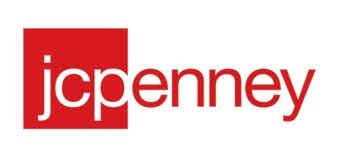Sometimes you just have to call them like you see them. I know there was a lot of positive press around Ron Johnson taking the CEO role at J.C. Penney Company, Inc. (NYSE:JCP), but if he believes what he says in their earnings release, then delusional is too kind a word. He made the statement in the current quarter that “we believe the bold actions taken in 2012 will materially improve the company’s long-term growth and profitability.” You are kidding me, right?

I Didn’t Think They Could Do Worse, But They Did
Each time J.C. Penney Company, Inc. (NYSE:JCP) reports earnings I think it can’t get any worse, and yet it does. In the current quarter, sales were down 28.4% and that included sales from the extra 53rd week last year. Comparable store sales were down 31.7%, and jcp.com sales did even worse with a drop of 34.4%.
Not that many years ago, if an individual or family wanted to go shopping, they went to the mall. The two cornerstone stores at seemingly every mall were J.C. Penney and Sears Holdings Corporation (NASDAQ:SHLD). Today these two companies are in a race to see who can do worse faster. The difference between the two is, half of Sears is a decent company, I’m not sure that half of J.C. Penney is worth buying.
Where Does This Company Fit?
J.C. Penney Company, Inc. (NYSE:JCP) still has about 1,100 stores, but in most cases these stores are tied to an enclosed mall. Their competitors Macy’s, Inc. (NYSE:M) and Sears are also tied to mall locations, but there are key differences. First, Macy’s is seen as a high-end retail store. The company’s brand is better quality at a higher price, which accounts for Macy’s class leading 39.56% gross margin. When Macy’s has a sale, it’s something to take advantage of and not just an everyday occurrence. Macy’s, Inc. (NYSE:M) customers appreciate the consistent message, and same-store sales were up 3.7% in the last quarter.
Sears has its challenges, but honestly Sears’ biggest problem is Kmart. In the last quarter, Sears’ domestic stores saw a same-store sales increase of 0.8%, while Kmart’s same-store sales were down 3.7%. Sears has the advantage of bringing customers in the door for tools, lawn care, electronics, and fashion. Sears’ gross margin is dragged down by Kmart, but even combined the company managed 27.1% last quarter. J.C. Penney doesn’t offer many of these choices, and lives or dies by its fashion selection.
Kohl’s Corporation (NYSE:KSS) represents what J.C. Penney used to be before they lost their way. Kohl’s offers decent prices, but has regular sales to draw crowds. The big difference is, most Kohl’s are located in heavy traffic strip malls rather than traditional malls. Kohl’s saw comps. increase 1.9% in the current quarter, and new locations usually generate solid crowds. If Kohl’s has a problem it’s their pricing might be a bit too high. Their gross margin is 38.13%, which seems to be too close to Macy’s, but Kohl’s can’t expect to charge Macy’s like prices.
Target Corporation (NYSE:TGT) might be J.C. Penney’s biggest problem. The traditional Target customer is the one that used to go to J.C. Penney for clothes. Since Target’s clothing lineup is constantly refreshed, customers stopped making the extra trip to Penney’s. Target Corporation (NYSE:TGT) carries a gross margin of 27.7% and by comparison, J.C. Penney only managed 23.8% in the last three months. When a customer can go to Target and get clothes along with their groceries in one trip, why would they drive out of the way to a local mall?
As you can see, J.C. Penney Company, Inc. (NYSE:JCP) doesn’t seem to have a natural fit. Macy’s and Sears are better positioned in enclosed malls. Kohl’s and Target Corporation (NYSE:TGT)are taking the casual clothing shopper.
So What Can The Company Do?
If J.C. Penney is to survive, they need to make some drastic changes. If their comparable store sales are dropping by 20% to 30%, clearly there are some seriously underperforming stores. The company needs to be aggressive in identifying these stores and either closing and selling, or closing and leasing. Sears utilized this strategy, and suggested they generated about $1 billion in returns with underperforming stores over the last year or so.
J.C. Penney needs to stop issuing shares. The company’s share count has increased 2.71% over the last year. This isn’t a big deal for a growing company, but for a turnaround more shares means more difficult EPS comparisons.
The company’s jcp.com site needs a partner. With 34% less sales, customers clearly aren’t interested in jcp.com. A partnership to market J.C. Penney’s clothing through another major website might make sense. CEO Johnson could copy his former company Apple Inc. (NASDAQ:AAPL), by offering J.C. Penney products through eBay and potentially get much better results.
Looking at the numbers, I would recommend any of J.C. Penney’s competition from an investment perspective. Macy’s, Inc. (NYSE:M) and Target Corporation (NYSE:TGT) offer yields of about 2% and earnings growth of over 11%. Both companies have clear visions, and good margins in their categories. Kohl’s 3% yield is the best of the group, and if the company brings their prices down a bit, I believe they can grow faster than the 6.4% rate analysts expect. Even Sears could be a decent buy if they spun off or sold the Kmart brand. Unfortunately, J.C. Penney is a fast fading retailer. Investors shouldn’t be thinking about “long-term growth,” the question at this point is, will J.C. Penney survive? If they have another few quarters like this one, there won’t be anything left to save.
The article Delusional Is Too Kind originally appeared on Fool.com and is written by Chad Henage.
Copyright © 1995 – 2013 The Motley Fool, LLC. All rights reserved. The Motley Fool has a disclosure policy.




